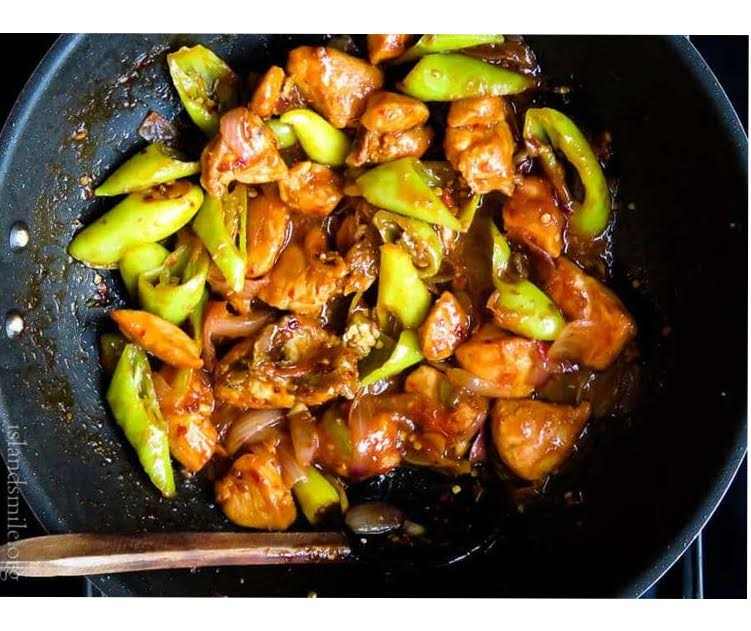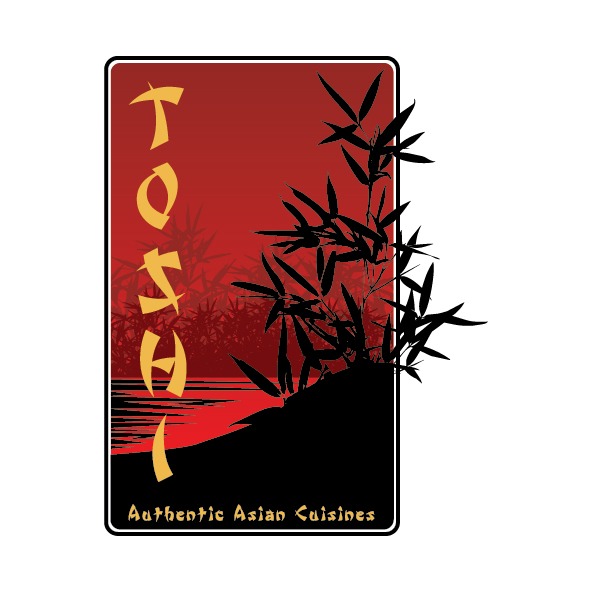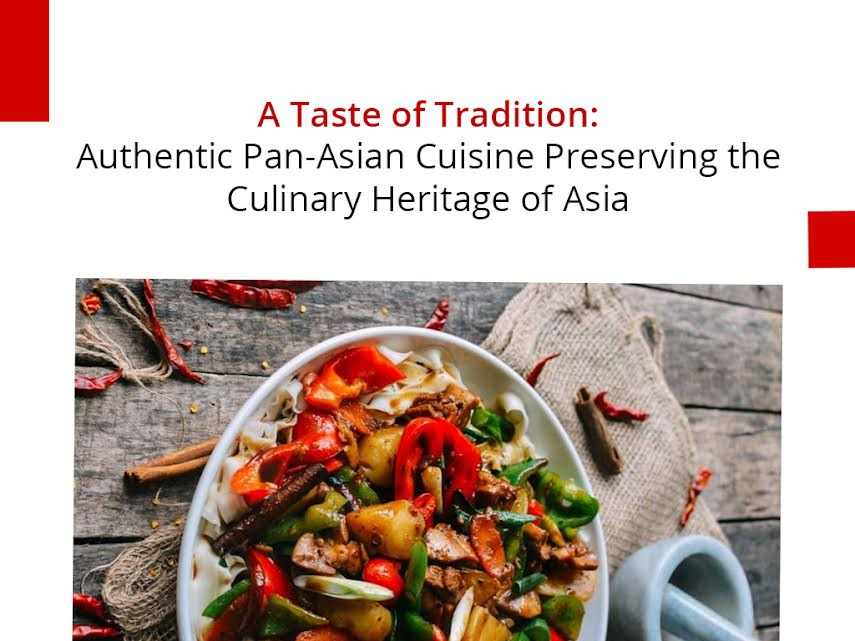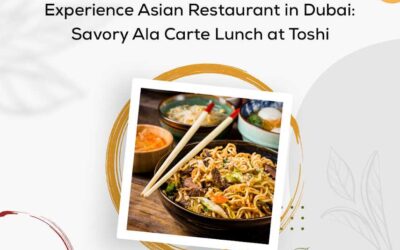In a world that’s rapidly embracing globalization, there’s an increasing appreciation for authentic, traditional cuisines that encapsulate the rich cultural heritage of different regions. Pan-Asian cuisine, a vibrant tapestry woven from the diverse culinary traditions of Asia, stands out as a testament to the artistry and history of the continent’s people. In this exploration, we delve into the roots of Pan-Asian cuisine, celebrating its authenticity and the role it plays in preserving the culinary heritage of Asia. As we embark on this culinary journey, it becomes evident that Pan-Asian cuisine is not merely about the flavors that tantalize the taste buds; it’s a cultural expression that tells stories of generations, geographical landscapes, and the fusion of ancient traditions. The roots of Pan-Asian cuisine delve deep into the histories of each region, forging a connection between the past and the present on every plate.
The Melting Pot of Flavors:
Pan-Asian cuisine is not a singular entity but a harmonious blend of flavors, techniques, and ingredients from various Asian cultures. From the fiery spices of Thai dishes to the delicate umami of Japanese sushi, each component contributes to the intricate mosaic that is Pan-Asian cuisine. This fusion is not a compromise but a celebration of the diverse culinary traditions that have evolved over centuries.
Diversity in Unity:
One of the defining features of Pan-Asian cuisine is the harmonious coexistence of diverse culinary traditions. From the aromatic curries of India to the precision of Japanese kaiseki, each dish contributes to the mosaic of Pan-Asian flavors. This diversity is not a clash but a celebration, showcasing the unity found in the shared love for fresh ingredients, balanced flavors, and the artful presentation of dishes.
Culinary Crossroads:
Asia, often referred to as the “Culinary Crossroads of the World,” has been a melting pot of cultures and trade routes for centuries. This historical intersection has not only facilitated the exchange of goods but has also led to the cross-pollination of culinary techniques and ingredients. The Silk Road, for instance, became a conduit for the transfer of spices, herbs, and cooking methods, creating a culinary tapestry that continues to evolve today.
Key Elements of Pan-Asian Cuisine:
-
Umami Magic from Japan:
Japan, with its meticulous attention to detail, has given us sushi, sashimi, and ramen. The art of sushi-making, in particular, has become a global phenomenon, with chefs worldwide striving to master the delicate balance of rice, fish, and seaweed.
-
Spices and Aromas of Thailand:
Thai cuisine is a symphony of bold flavors and aromatic herbs. Dishes like Tom Yum soup and Pad Thai showcase the skillful use of ingredients like lemongrass, galangal, and Thai bird chilies. The result is a culinary experience that tingles the taste buds with sweet, sour, salty, and spicy notes.

-
Chinese Culinary Mastery:
Chinese cuisine, with its vast regional variations, forms a cornerstone of Pan-Asian cooking. From the fiery dishes of Sichuan to the delicate dim sum of Cantonese cuisine, the diverse range of flavors and techniques showcases the depth of Chinese culinary expertise.
-
Balanced Harmony of Vietnamese Dishes:
Vietnamese cuisine is renowned for its fresh and vibrant flavors. Dishes like pho, banh mi, and spring rolls encapsulate the balance of sweet, sour, salty, and spicy elements. The use of fresh herbs and vegetables adds a refreshing touch to the culinary repertoire.
The Role of Ingredients:
At the heart of Pan-Asian cuisine lies a reverence for ingredients. From the umami-rich miso in Japanese cuisine to the vibrant array of spices in Indian dishes, the selection and treatment of ingredients are central to the authenticity of each culinary tradition. Chefs often pay homage to local farmers and producers, ensuring that the quality of the ingredients shines through in every dish.
A Cultural Symphony on the Plate:
Pan-Asian cuisine is more than a collection of individual dishes; it’s a symphony that harmonizes diverse flavors, textures, and colors. The careful arrangement of elements on a plate is a nod to the cultural aesthetics of each region. Whether it’s the meticulous presentation of sushi, the artful dim sum assembly, or the vibrant colors of a Thai curry, every dish is a visual and gastronomic delight.
Preserving Traditions in the Modern World:
In an era where fast food and globalized tastes dominate, the preservation of traditional culinary practices becomes paramount. Efforts to sustain traditional farming methods, support local artisans, and safeguard endangered recipes contribute to the resilience of Pan-Asian cuisine. Through a commitment to authenticity, the culinary community ensures that future generations can savor the same flavors that have stood the test of time.
Preserving Culinary Heritage:
In the modern era, where fast food and globalized flavors dominate the culinary landscape, the importance of preserving traditional cooking methods and recipes cannot be overstated. Pan-Asian cuisine, by staying true to its roots, becomes a guardian of culinary heritage. Each dish is a link to the past, a connection to the generations that crafted and perfected these recipes.
The Role of Restaurants:
Authentic Pan-Asian restaurants play a crucial role in preserving and promoting the culinary heritage of Asia. By sourcing traditional ingredients, employing skilled chefs, and staying true to time-honored recipes, these establishments become custodians of authenticity. They provide patrons with an immersive experience, transporting them to the heart of Asia with every bite.
Challenges in Preservation:
However, the preservation of Pan-Asian culinary heritage comes with its challenges. The globalization of ingredients and the demand for mass production can sometimes dilute the authenticity of dishes. It is essential for chefs and enthusiasts alike to remain committed to sourcing high-quality, traditional ingredients and preserving the intricate techniques that make each dish unique.
Conclusion:
In the tapestry of global cuisine, Pan-Asian fare stands out as a vibrant and authentic representation of Asia’s rich culinary heritage. From the bustling street markets of Bangkok to the serene tea houses of Kyoto, each dish tells a story of tradition, skill, and passion. As we savor the flavors of Pan-Asian cuisine, let us recognize and celebrate the cultural diversity and culinary artistry that it embodies, ensuring that these traditions are passed down to future generations. In doing so, we not only indulge our taste buds but also become stewards of a culinary legacy that spans continents and centuries.




